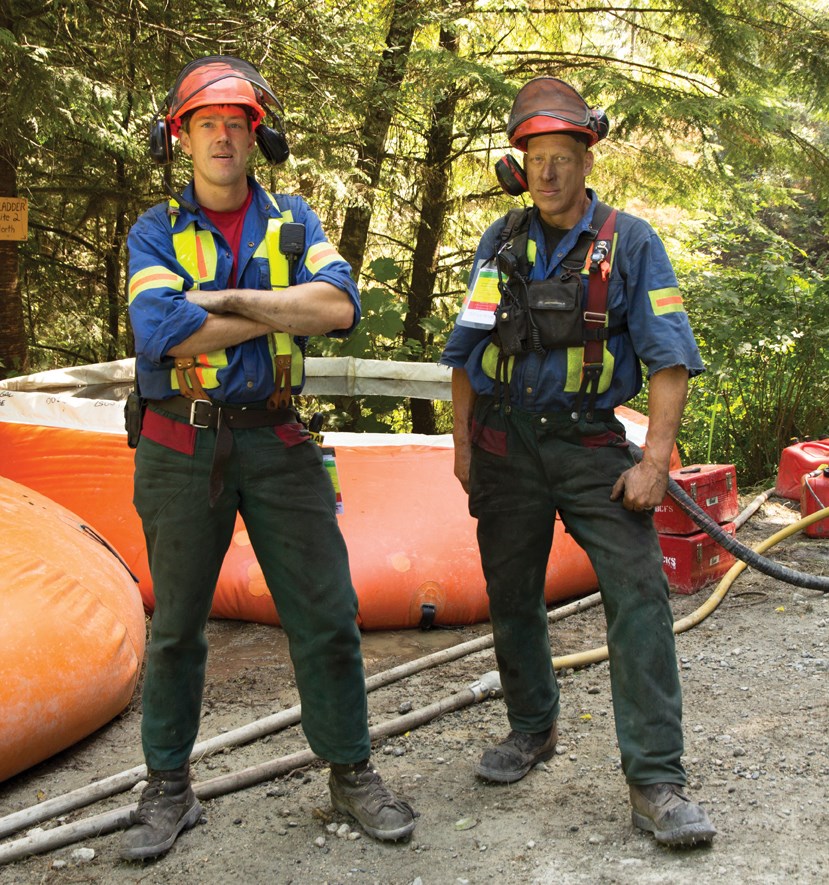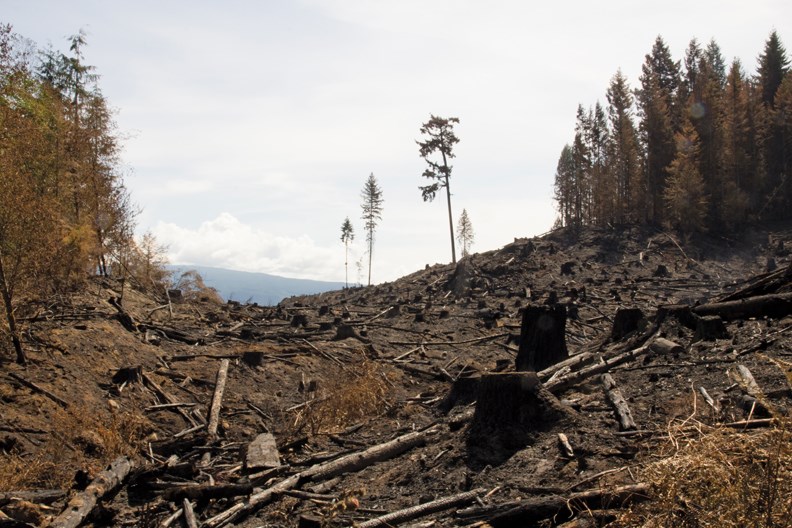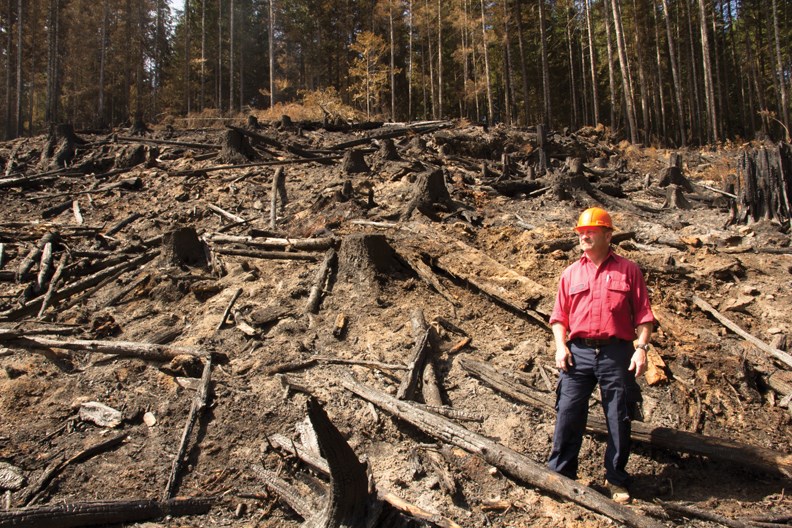The 400-hectare Old Sechelt Mine fire was 90 per cent contained as of Wednesday, July 14, incident commander Reg Trapp said, predicting the fire will be 100 per cent contained by Thursday.
“We do feel that we’re on the downhill slide here,” Trapp said. “We will be starting to release resources as appropriate over the next several days and turning this fire back over to the local authorities.”
The wildfire started Thursday, July 2, about two kilometres northwest of Sechelt, growing to 250 hectares in size by July 7, then expanding further, mainly due to controlled burns.
An 18-metre guard has been established around the fire’s perimeter and crews have spent the last few days working to control the last hot spots on the perimeter before the fire can be classified as 100 per cent contained.
A guard is a section of terrain surrounding a fire that has been dug down to mineral soil. A road, for instance, is a guard. Often guards have to be dug out with heavy machinery, or in some cases, by hand.
Only a few small areas of the fire were dug out by hand, a few more by machinery. Most of the fire was contained by existing logging roads.

“All I have to say is thank God for the roads,” tree faller Sean McCooey said. McCooey was on site doing danger tree assessment with another tree faller, Mike Woode.
The next stage, once the fire is contained, is patrol. Over the next week or so – after full containment is reached – patrols will walk the perimeter of the fire, looking for small hot spots that were missed during the initial mop-up.
There are no more open flames inside the perimeter, but there are some areas of ground that are smoking fairly heavily. Once the fire is completely contained, the rest is watched carefully, but basically left to burn itself out.
“Generally that interior – because it’s already black and kind of burned – there’s not a lot of available fuel in there for it to start back up,” Trapp said. “Since we have our outside boundary done, it can’t get up and continue on. It would hit our boundary and stop there.”
However, Sechelt residents will not be free and clear from the smoke for the foreseeable future.
“You will see smoke from this fire until you guys get your typical, good coastal rain,” Trapp said. “When you get 30 to 40 ml, you probably won’t get any more smoke.”
The turning point for the fire came on Wednesday, July 8, after winds died down, allowing the firefighters to manoeuvre into better positions.
“Being a ground fire and the winds finally slowing down, it allowed the crews to get around, establish hose lays – that was probably the turning point,” Trapp said, “Not so much wind and getting enough resources in place to deal with what we had here.”
The rain last weekend also helped. Trapp said the rain increased the humidity in the air and stopped the fire from spreading as quickly. It allowed the ground teams to accomplish more in the same timeframe.

Thirty contractors, two B.C. Type 1 specialized crews totalling 37 personnel, and one Type 1 crew from Ontario totalling 21 personnel were deployed this week, along with one excavator, one helicopter (there were four at one point), four water tenders, and the Incident Management Team that Trapp commands.
On top of that there are support crews, like Allan Langner and Bernie Franke, who run the kitchen trailer in Kinnikinnick Park, where the firefighting crews have their base of operations.
The firefighting crews have used several different approaches to fighting the Sechelt fire. In its early stages they used bomber planes to dump fire retardant over the area. The retardant has a limited lifespan. When it’s fresh it burns on contact with the fire, creating a gas heavier than oxygen that suffocates the fire on the ground.
In later stages they use the same planes to drop a soapy solution called surfactant. As the fire chars trees and ground cover, their surfaces blacken and become hydrophobic – meaning that they are resistant to water. Surfactant sticks to the charred surfaces and allows the water to seep into the wood instead of running off it.
According to Trapp, every tactic they use in fighting a fire is one piece of a larger jigsaw puzzle. Without the retardant, the ground crews wouldn’t be able to get in to contain the fire.
A bear and a cougar have already been spotted returning to the area. Trapp said most of the animals close to the fire would have gotten out well ahead of time.



